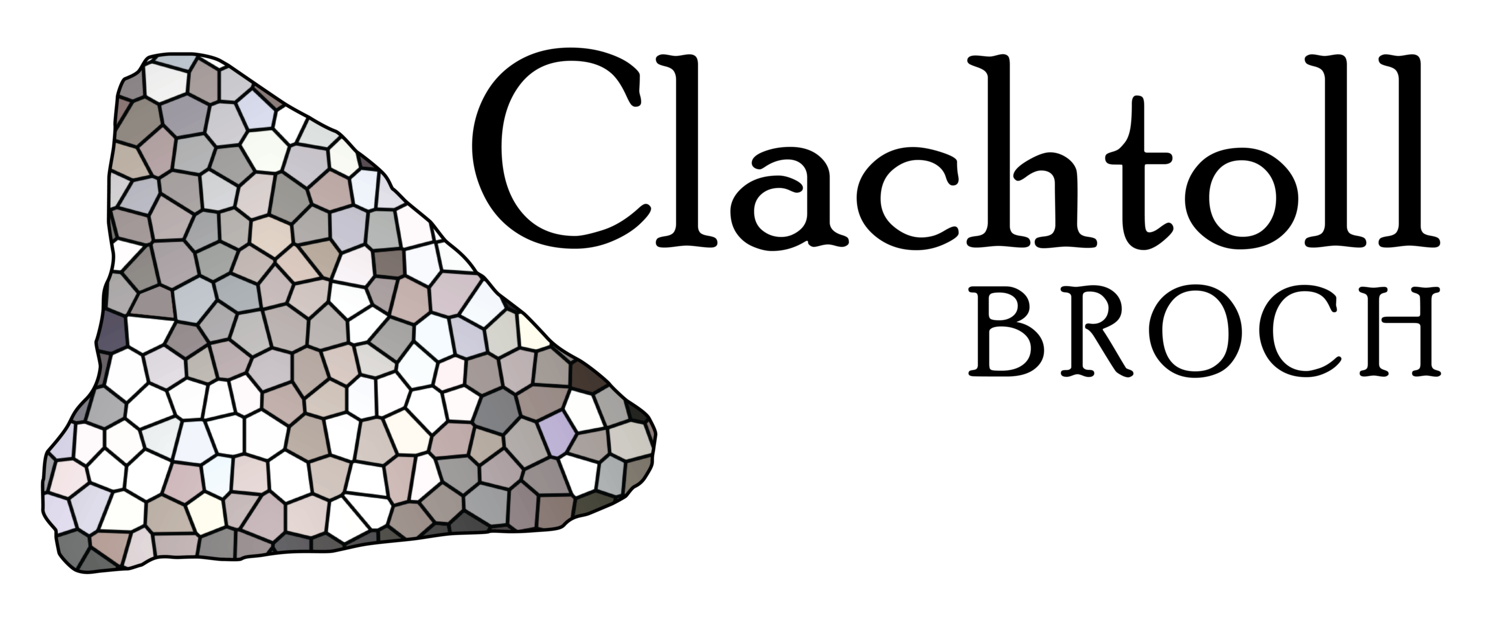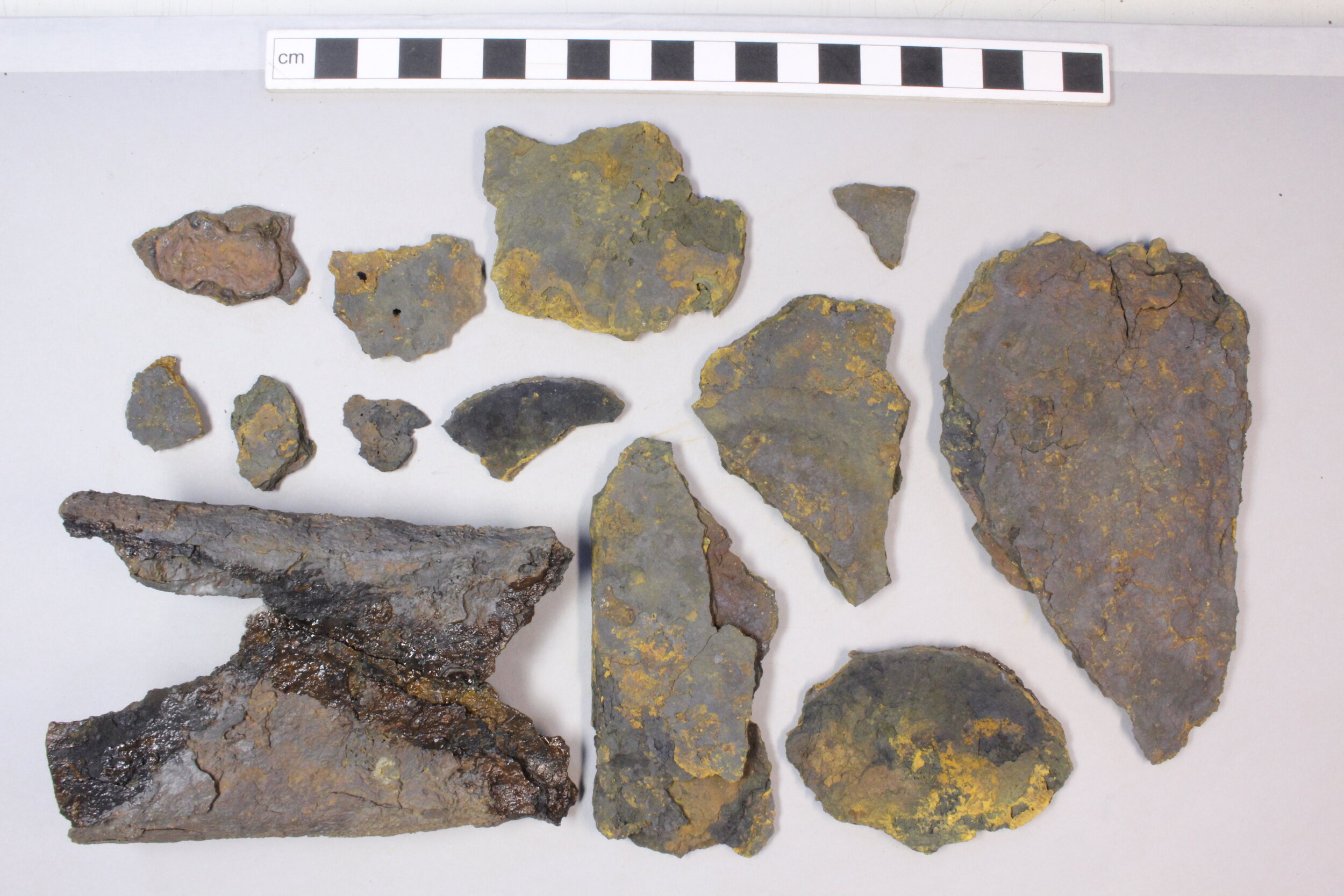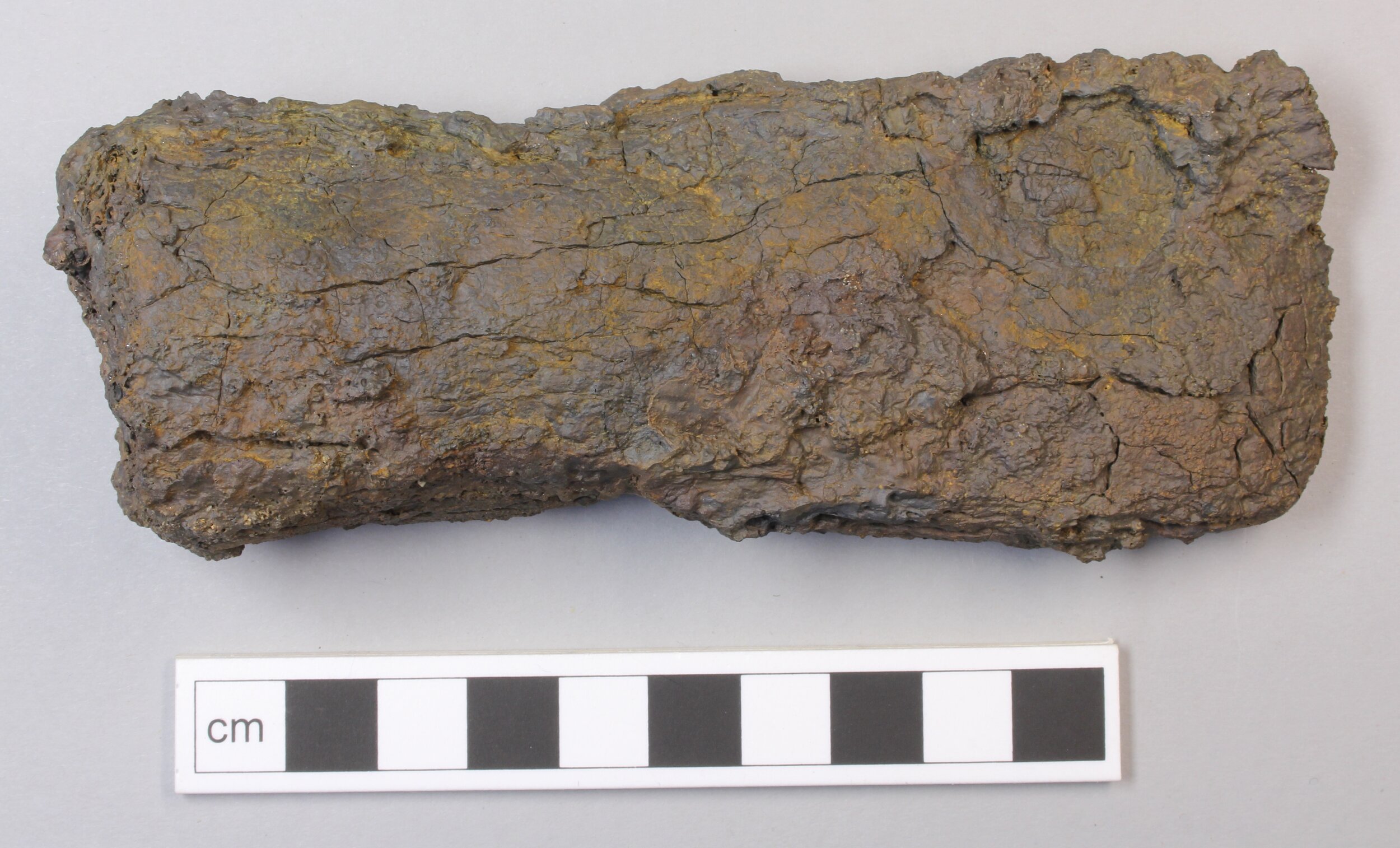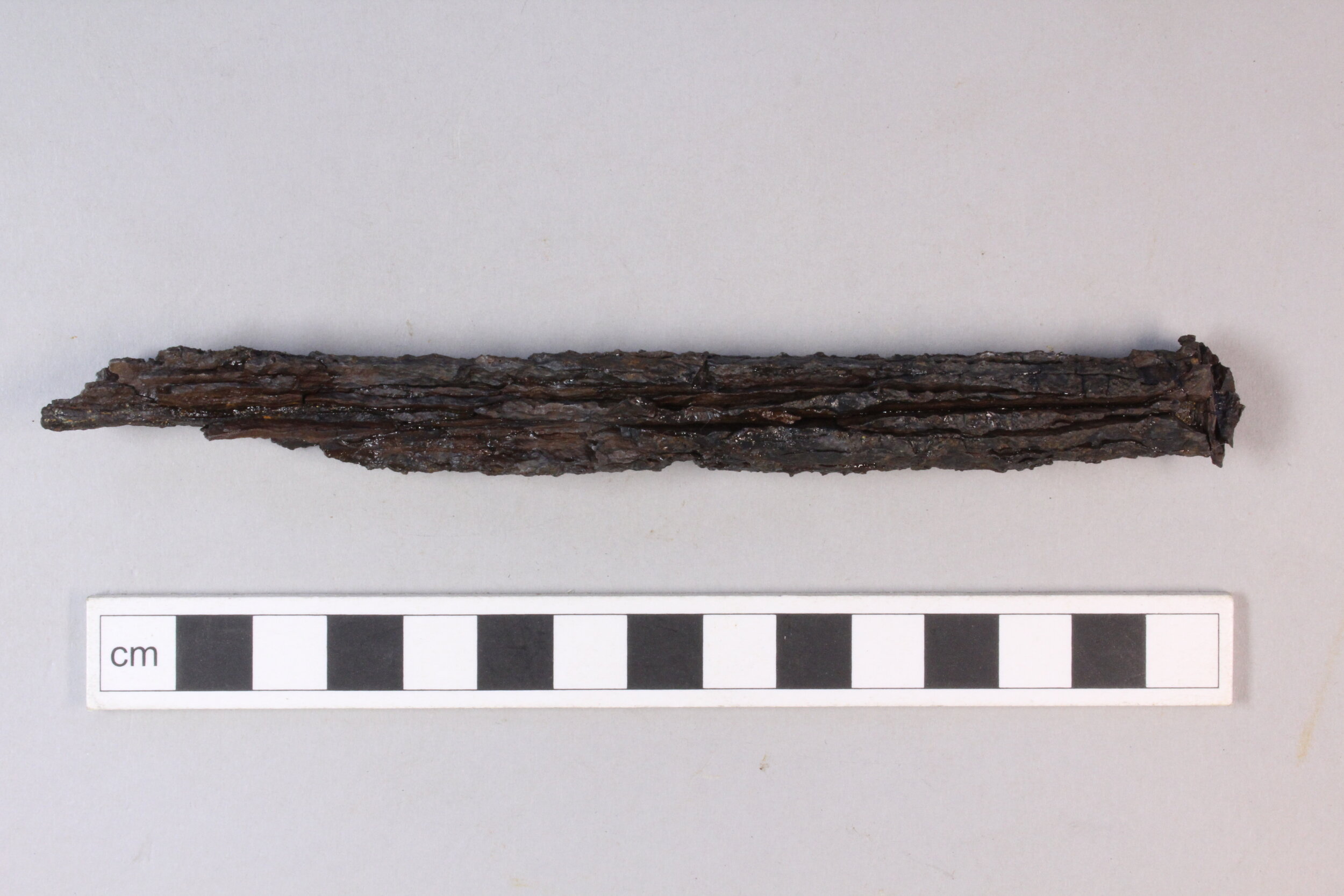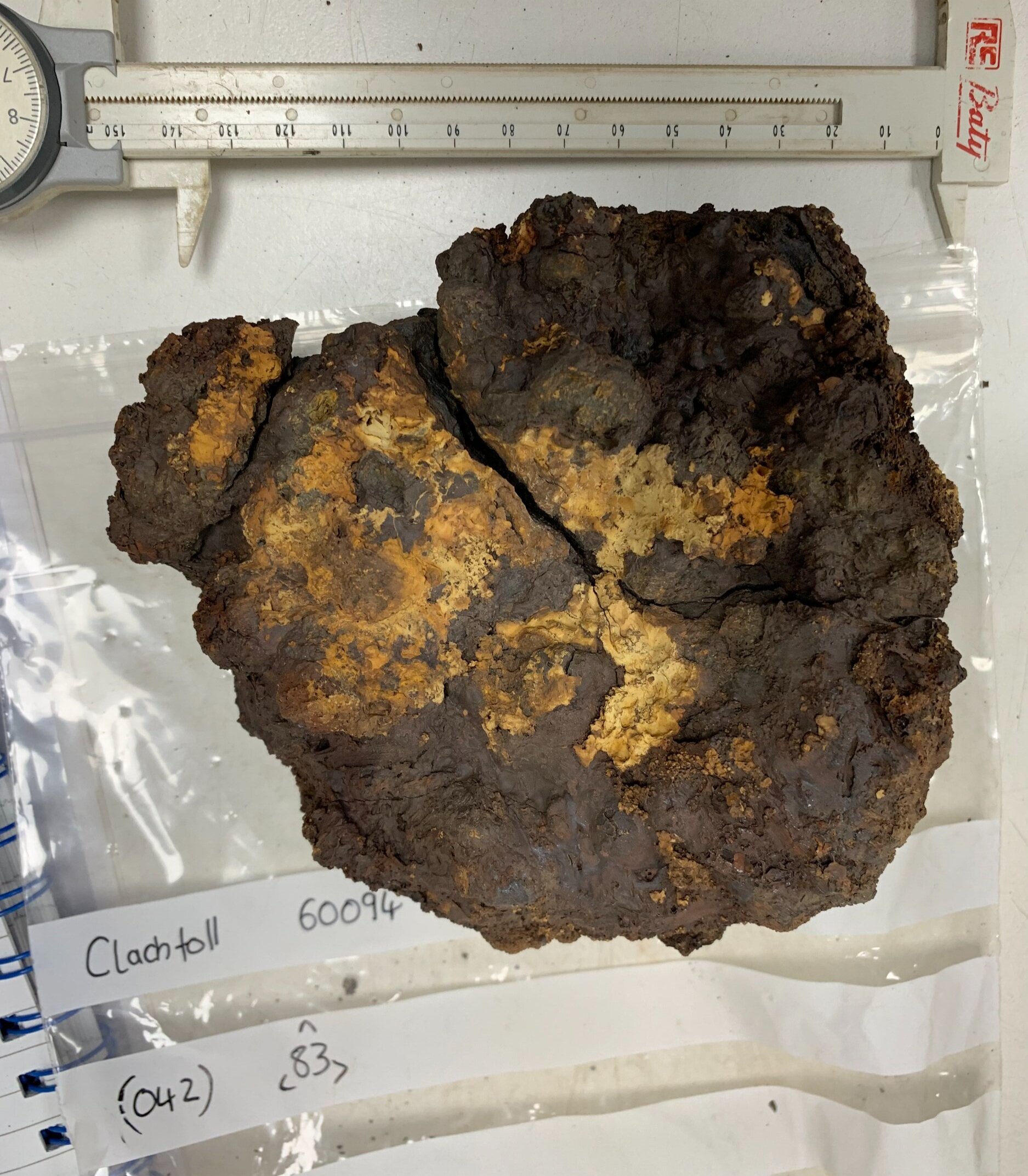
Iron objects conjure up images of the people who made, used and wore them
Despite the broch belonging to the ‘Iron Age’, finding iron objects on archaeological sites is actually a rare thing.
The discovery of thirty recognisable iron objects from Clachtoll is a tremendous discovery. Further, the assemblage is unusual in many respects, not least due to the quantity of very ‘robust’ iron objects that survive; again, a rare occurrence on Atlantic Iron Age sites. Like many of the Clachtoll artefacts, the assemblage is dominated by tools, particularly those associated with agriculture (such as sickles, ards, spades and reaping hooks) and food and drink (such as knives and vessels).
The Fat of the Land: Agriculture, Food and Drink
Many of the finds were related to agriculture, food and drink. Sickles, reaping hooks, ards and spades would have been used in preparing the land and harvesting crops. Iron vessels would have been used for storage and consumption.
Reaping hook, for cutting and gathering crops
Fragments of a socketed spade
Fixtures, Fittings and Storage
Although the organic interior decorations do not survive on any broch sites, at Clachtoll we have rare evidence of fixtures and fittings. A handful of nails were recovered, most likely used in joinery, perhaps for small personal items such as storage boxes rather than structural joinery. The item shown here is perhaps the shank of a nail used for larger items.
Decoration, Aesthetics and Symbolism
Dress accessories are among the most intimate of objects discovered on archaeological sites. They conjure up images of the people who wore them. This iron pin would have been worn as an ornament, fastening together cloaks or other garments.
Crafts
Many of the iron objects are associated with crafts, for example shears (below) for the processing of hides and fleeces; and axes, adzes, and a possible chisel for woodworking.
Fragments of a pair of shears
The shears as they might have appeared when complete
Invisible Evidence
And the other types of objects from Clachtoll also show us that iron was being used. For example, we have analysed traces on the surfaces of the bone and antler objects to understand how they were made. Tool marks show the use of iron tools such as axes or cleavers, saws and fine blades.
Though perhaps not the most aesthetically pleasing, this bone object tells us a great deal about on-site activities and the use of iron. Made from a whale vertebra, it was used as a chopping block and working surface – one side is covered with tool marks made during craft activities. The marks were formed by at least four different iron tools, ranging from punches to cleavers.
Read more about our analysis of this object here.
Making Iron
Over 3.5kg of ironworking waste known as slag was recovered at Clachtoll. The association of ironworking with brochs is well-attested elsewhere. Many Iron Age sites have evidence of smithing – the secondary working to create actual tools and objects – but the Clachtoll assemblage is related to the primary extraction of the actual metal from the earth. There is no evidence of smithing within the broch itself, suggesting that slag was brought into the broch from elsewhere. Whilst many may view this as some form of ritual deposition, the material may simply have been brought in with other material and spread across the interior space as flooring or levelling material.
